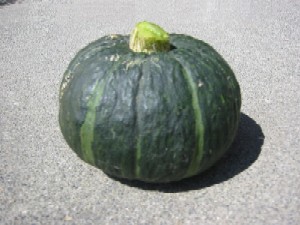
Kabocha is a vegetable that is part of the Asian version of the winter squash family. It is commonly referred to as the Japanese pumpkin since it shares similar appearance and characteristics to it. In other countries, a similar fruit is also grown and cultivated. In Korea, kabocha is called “danhobak” and in Cambodia, the same vegetable is referred to as “abobora”. The great thing about this vegetable is that it can be grown for the entire year making it available in grocery stores and market places any time or any season.
The skin of kabocha is typically dark green in color with some light green to whitish striations. This vegetable is also heavy owing to the thick flesh inside of it. The flesh color ranges from golden yellow to yellow orange similar to the more common pumpkin. The kabocha also shares the same soft and moist texture with sweet potatoes. Its taste when eaten raw or cooked is typically sweeter than other squash varieties.
With the bright colors found in kabocha, many health experts have labelled it as a health food. The Japanese typically use kabocha in vegetable dishes, soups, and even in sushi preparations. The yellow orange flesh is said to be a great indicator for its high beta carotene content which is an essential nutrient because of its anti-oxidant properties. With a good supply of beta carotene in the body, some cancer-causing free radicals may be flushed out of the system. Kabocha is also a rich source of Vitamin C. As much as 30% of the Vitamin C requirements of the body can be provided by a serving of this nutritious vegetable. Along with other squash varieties, kabocha is also a very rich source of Vitamin A which is helpful in promoting good eyesight. It is also rich in fiber which helps promote good digestion and promotes a feeling of fullness for a longer period of time.










Leave a Reply